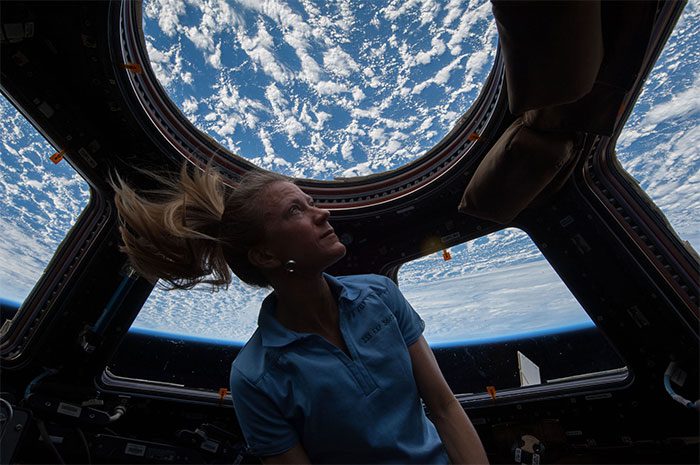Humans perceive their position and movement on the ground based on the gravitational pull of the Earth. In a weightless environment, does this sensory perception alter our awareness and understanding of motion?
On the ground, it is easy for us to feel where our limbs are, whether we are moving or standing still, falling or sitting upright, thanks to input from various balance sensory systems in our body.
However, in a vacuum environment, while wearing virtual reality goggles or sitting in a moving car, you might experience disorientation.

Astronaut Karen Nyberg on the International Space Station. (Photo: NASA).
Fortunately, astronauts can adapt to the weightless environment when aboard a spacecraft in orbit. A recent study assessed their ability to perceive motion both in space and after returning to Earth, finding no significant changes.
The near absence of gravity can easily alter our perception of movement, and astronauts often feel as if they are moving faster within the confined space of the spacecraft due to the weightlessness of their bodies.
Still, they are able to accurately assess the distance they have traveled along the corridor in visual simulations, both during and after spaceflight.
One way the human body recognizes changes in position or movement is through the displacement of fluid contained within a structure located deep in the ear. This is known as the vestibular system, which provides us with awareness of acceleration, tilt, and rotational motion.
In space, microgravity disrupts the vestibular system by removing certain information that it typically processes, specifically the continuous gravitational pull from Earth that helps us identify which way is up.
Typically, the vestibular system works simultaneously with the visual system to perceive distance, speed, and direction of movement. When in orbital space, astronauts rely less on their vestibular system and become more sensitive to visual information instead.
So how does this affect astronauts’ perception of distance traveled in virtual simulations during and after long-duration flights, and do changes in body posture have a similar effect on them?
Researchers conducted experiments with 12 astronauts, consisting of 6 males and 6 females, at various points before, during, and after their year-long missions aboard the International Space Station (ISS), comparing their abilities to a control group of 20 individuals on Earth.
The results showed that immediately after flights, astronauts overestimated distances visually when lying down compared to sitting upright before their flight, but this difference disappeared later, and their assessment abilities returned to normal.
However, on average, their perception of the distance traveled along the virtual corridor in the simulation did not change much throughout their time in space, nor even one week or three months after their return.
This finding aligns with previous scientific discoveries suggesting that astronauts face no difficulties in spatial orientation.
This information is valuable, especially in emergency situations where astronauts need to move quickly aboard the ISS to locate equipment or access escape routes. It is also crucial for research preparing for human missions to the Moon, which many countries aspire to undertake.





















































